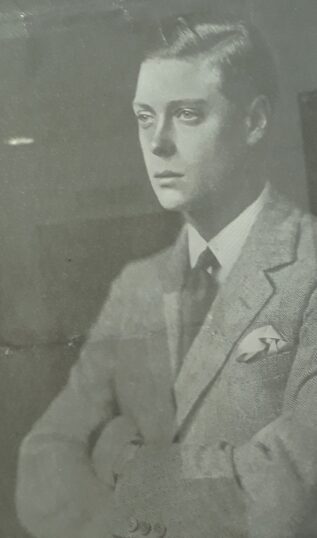Goldings: from Private Estate to Barnardo’s Technical School
Susan Payne
By the time the Abel Smiths, a London banking family, brought the Goldings estate, the original mansion had stood on its lower slopes for some 100 years. Robert Smith inherited Goldings in 1861 and had a new house built up the hill, away from the damp and mists created by the river Beane. The architect, George Devey, produced a very large, red-brick mansion by 1877. Following the First World War, most of the family had moved away, leaving Robert’s grandson, Captain Reginald Henry M Abel Smith to put the Goldings estate on the property market.
According to the Goldings Estate sales catalogue (HALS ref. DE/X1023/1/2), the plan was to sell the mansion and grounds in lot 1. The catalogue reveals the size of the mansion: halls, 6 reception rooms, conservatory, and domestic offices (such as pantries, storerooms, kitchen, scullery, larders, dairy) on the ground floor. The upper floors housed 43 bed and dressing rooms, 7 bathrooms and nursery.
The auction took place on 27th July 1920, but the first lot was withdrawn, having reached a bid of £54,000 only.
Dr Barnardo’s
At this time, Dr Barnardo’s Homes was looking for a countryside location to move their Boys’ Technical Instruction Centre away from Stepney in London. The purpose of the school was to train boys in manual trades, e.g., carpenters, tinsmiths, printers and boot-makers.
Captain Abel Smith offered property on “most exceptionally favourable terms. He has stated that nothing could be more fitting than that the home of his fathers should be placed at the disposal of these lads, many of whom, but for the Barnardo Homes, might have come to grief.” (Hertfordshire Mercury, 7th May 1921)
In April 1922, 260 Barnardo’s boys marched through Hertford, pausing to lay a wreath at the war memorial, and then on to Goldings. The school’s official opening had to wait until 18th November, when Edward, the Prince of Wales came to the town.
Official Opening
The royal car was welcomed by Barnardo’s officials as the boys’ band came to attention and struck up the National Anthem, followed by three rousing cheers, as reported by the Hertfordshire Mercury a week later.
Prince Edward dressed in a grey lounge suit and bowler hat appeared on the terrace to acknowledge the boys, journalists and members of the public who had gathered on the lawn. He received presents, including a leather-bound book, an inlaid box, a wheelbarrow, and a pair of patent leather shoes in the prince’s size, all products of the technical school.
In reply, the prince spoke about the great benefit of the boys coming to Goldings: “You are being taught above all things to play the game, and you can do it much better in these surroundings … on the playing fields here [rather] than in the small courtyards at Stepney.
“Another great advantage which comes from your moving here is that in the country you can equip yourselves much better for life overseas. […] Many of you will go to our Empire overseas and it ought to be a great source of pride to you to know that over 10,000 old boys joined up in the Great War from overseas. I sincerely hope that none of you will ever have to do the same but do not forget that wherever you go you remain citizens of the Great Empire and that citizenship entails the acceptance of responsibilities as well as privileges.”
Following the speech, the prince toured the accommodation, workshops and allotments. Before leaving Prince Edward unveiled a memorial tablet to the late William Baker, former director of Barnardo’s Homes for 15 years.
The William Baker Technical School continued until 1967 when Goldings was purchased by Hertfordshire County Council to be used by the County Surveyor’s Department. Thirty years later, the property was sold again to be converted into apartments.






Add your comment about this page
my parents were the ‘warden’ & ‘matron’ of the Verney from about 1967 to 1970, taking care of the Barnardoes lads
I do not know when it was bought but The Verney on Vicarage Lane, Waterford was used by printing apprentices from Goldings, possibly other trades too in the 60s and 70s. The Barnardo School of Printing was in Mead Lane, Hertford. I was there from 1975 to 1979.